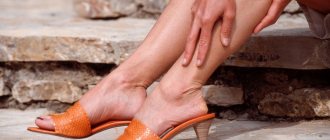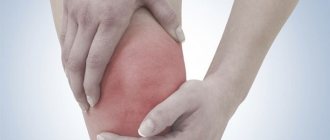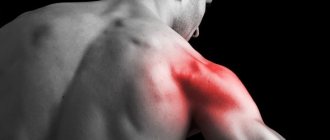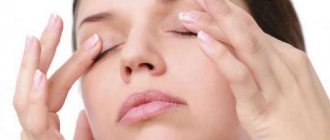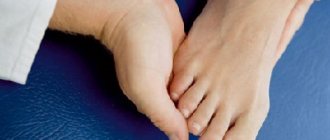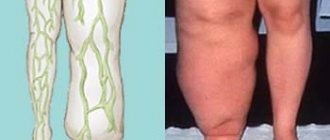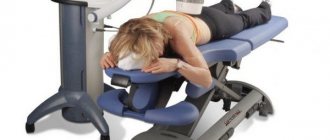Any symptoms cannot occur without obvious reasons. The symptoms that arise may be the result of a pathological process in the body or the influence of any external factors. Discomfort and pain in the toes is an atypical symptom that may indicate the course of a variety of abnormalities. People often ignore this manifestation, considering it temporary and harmless. In fact, discomfort in the toes may indicate a number of pathological processes that require immediate medical attention.
Reason #1 - arthritis
If pain in the fingers occurs mainly at night, this is a characteristic sign of arthritis. With arthritis, most often, pain occurs in one specific finger, and not in all of them at once.
If your thumb hurts, then most likely it is psoriatic or reactive arthritis. Gout, which is typical for older men, is also accompanied by severe pain in the big toe.
Patients often complain that their second toe hurts. In most cases, this indicates that they have a disease such as rheumatoid arthritis. In such patients, inflammatory processes also begin to spread to other joints of the body. Therefore, it is extremely important to contact specialists in time.
A common feature of arthritis is the symmetrical nature of pain. That is, on the right and left legs, a specific finger is susceptible to pain.
Arthritis pain is usually intense. It can manifest itself both in movement and at absolute rest. Swelling, swelling, and redness in the affected joints also indicate the presence of arthritis. The same applies to cases where the affected finger becomes hot to the touch. In addition to the pain that occurs, there are a number of other symptoms that indicate the presence of arthritis:
- Difficulty moving;
- Modification of the shape of the affected joint;
- A crunching sound that occurs when a joint is loaded.
Proper nutrition is the key to success
During the treatment of leg joints, special attention should be paid to proper diet. For gout and arthritis, a balanced diet can significantly alleviate the condition and strengthen cartilage tissue. Patients are recommended to include in their daily diet:
- fish and poultry;
- jelly made from natural gelatin;
- lean meat;
- dairy products;
- cereals;
- cereals;
- fruits and vegetables;
- aspic.
For gout, by-products are contraindicated - offal, kidneys, liver, shellfish, alcohol and legumes. Avoid consuming full-fat milk and fried meat. Low-fat cottage cheese, feta cheese, kefir, cheese and other foods rich in phosphorus and calcium are recommended. Green tea and plain clean water are beneficial. The daily drinking regimen should include at least 1.5-2 liters of water.
No. 2 – arthrosis
Arthrosis (not to be confused with gout) is no less common cause of pain in the toes of the lower extremities than arthritis. The so-called arthrosis of the thumb, for some reason popularly called gout, is especially common. However, this is not gout at all, but a completely different ailment. Thumb pain is not a sign of gout. Moreover, with this disease, in addition to the pain of the big toe, pain between the toes may also occur.
True gout is rare and occurs overwhelmingly in men. While ladies mostly suffer from arthrosis of the big toes. The culprits of this trouble are the fair sex themselves with their irresistible desire to wear shoes with high heels, and even with narrow noses.
This causes deformation of the thumb, or rather its curvature. A protruding big toe bone is a typical sign of arthrosis. All this can lead to the fact that the entire joint begins to hurt, in addition, the entire foot can be so modified that it increases in size and cannot fully move.
Often, it is women who complain that their toe bones hurt. And the reason for this is precisely arthrosis.
If you do not consult a specialist in time, you can progress from the initial stage of arthrosis to a more serious manifestation of the disease - bursitis. Then a fluid called exudate begins to form in the thumb joint bursa. The result is swelling, heat, redness of the affected area. With bursitis, during palpation of the thumb, the patient may experience extremely acute pain.
A specialist can easily visually determine the presence of this disease - the characteristic purple tint of the patient’s joint skin will tell him this. If not treated properly, bursitis becomes chronic. Even worse is the transition from ordinary bursitis to purulent one. Then the disease begins to manifest itself throughout the entire body and condition of the person. The patient experiences fever, nausea, lethargy, severe headaches, and naturally extremely unpleasant pain in the affected joint.
Why do the joints of the toes become inflamed?
Causes of inflammation of the joints of the toes:
- joint dislocation;
- arthritis, bursitis;
- gout;
- osteoarthritis;
- rheumatic joint diseases.
A dislocated joint is always accompanied by an inflammatory process, since the joints are very sensitive to any changes. When a joint is displaced, joint fluid is actively released, the permeability of the vessels surrounding the joints increases, and swelling and pain occur.
Arthritis is a whole complex of inflammatory joint diseases. Each form of pathology is characterized by unique symptoms, for example, with infectious arthritis, the pain is severe and the body temperature rises. In other forms of the disease, pain may be less severe, and the patient’s general condition does not worsen. Often with arthritis, inflammation occurs in the joint of the second toe and other joints.
Bursitis is an inflammation of the joint capsule, which is responsible for the normal production of joint fluid, lubrication and nutrition of the joint. With this pathology, joint fluid is produced in excess, it changes its composition, which greatly disrupts the functioning of the entire joint.
Gout is a disease that causes the deposition of uric acid crystals in the joints. Gout manifests itself in very painful attacks and gradually affects all joints in the human body, even the largest ones, if the patient does not undergo treatment.
Arthrosis deformans is a degenerative disorder that occurs mainly in older people. With this disease, cartilage tissue is destroyed and an inflammatory process occurs in the joint. The disease develops slowly, the pain intensifies over time, and the motor function of the joint is impaired.
Systemic rheumatic diseases can also cause inflammation in the joints of the toes; such pathologies are called autoimmune. In rheumatoid arthritis, the joint is destroyed by the human immune system, which provokes the production of antibodies that destroy cartilage tissue.
No. 3 - Hammertoe deformity
Flat feet under the influence of constant pressure is the main cause of hammertoe deformity. Putting stress on the foot muscles due to vascular attempts to stabilize the limbs leads to the development of this disease.
The fingers seem to be in a pulled back position, and the joint itself protrudes.
The most common case is when the middle toe hurts due to a callus formed on the joint. This is a typical sign of a hammertoe deformity. With this disease, literally any shoe seems tight and uncomfortable, as the affected toes rest against it. The joints become chafed and the pain becomes unbearable.
In addition, irritation may occur in the area of contact, at the junction of fingers and shoes. This leads to fingertips becoming irritated and sore. The disease also begins to manifest itself in dermatological symptoms. If you do not see a doctor, the patient may lose the ability to move normally.
A large number of calluses form on the fingertips. At rest, calluses do not hurt. But when pressure is applied to them or a strong load is made while making a movement, the pain becomes extremely acute.
Medicines for pain in the toe
Before contacting a doctor and finding out the cause, the following medications can be used to relieve pain and inflammation (both in gel ointments and in tablets):
- Diclofenac is sold under the names ortofen, voltaren, diclofen, diclonac, diclonate, dicloran, diclobene, rapten, naklofen, arthrozan, etc.
- Indomethacin is sold under the names methindol, indomin, indotard, indobene, rheumatin, inteban, etc.
- Ibuprofen is included in the drugs Nurofen, Brufen, Bolinet, Burana, Reumafen, and butadione is included in Reopirin and Pirabutol.
- Piroxicam is available in the form of drugs Pirocam, Roxicam, Pirox, Erazon, and lornoxicam is sold under the name Xefocam.
- Ketoprofen is sold under the names ketonal, flexen, artrosilene, profenid, knavon.
- Ketorolac is available in the form of drugs ketorol, ketalgin, dolac, adolor.
No. 4 – Morton's neuroma
Another name for this disease is plantar fasciitis. The disease is accompanied by pain not in the fingers themselves, but in their bases. Putting pressure on the nerve in this area when walking is the main cause of plantar fasciitis. Women especially often suffer from this disease.
The development of the disease occurs due to frequent injuries that provoke pinched nerves and the appearance of traumatic neuritis. The more often the traumatic impact occurs, the larger the size of the nerve becomes. The big nerve, as you know, hurts more.
Pain at the base of the fingers is especially pronounced when lifting weights. Morton's neuroma can cause pain in the calves in addition to the base of the fingers. If, in addition to the first three fingers, the ring toe or little finger hurts, most likely the deformity has begun to spread to the entire joint. It is extremely important to go to the clinic already at the initial stage of the disease.
Therapeutic measures
How to treat? This is not the easiest task. First, you need to identify the root cause of the symptom. Depending on the nature of the pain and accompanying symptoms, the patient should visit several specialists. How to treat pain syndrome is decided by a specialized doctor.
To eliminate joint pain, several methods are used:
- orthopedic;
- medication;
- physiotherapy;
- surgical intervention.
The orthopedic technique accepts the use of special insoles and instep supports. It is possible to use thumb clamps and related devices. This issue is resolved individually with an orthopedic doctor.
Drug therapy is based on the use of drugs. Special products help eliminate pain and inflammation. For this purpose, several medicinal groups are used.
| Groups | Characteristics |
| Non-steroidal anti-inflammatory drugs. | Designed to relieve pain and inflammation. The drugs Ketorolac, Nimid, Nurofen and Diclofenac are often used. |
| Analgesics, or painkillers. | Help relieve pain. Representatives of this category are “Analgin” and “Novigan”. |
| Steroid medications. | Used in the development of acute pain syndrome. Often used in the form of blockades based on Novocaine and Lidocaine. |
| Chondroprotectors. | Drugs that restore joint tissue. Used for 3–6 months. Experts prefer Teraflex, Chondroitin and Structum. |
Physiotherapeutic procedures are prescribed along with medication. Their goal is to restore mobility and develop the affected joint. In medical practice, electrophoresis, magnetic therapy, and ultrasound are used.
Surgical intervention is used in the absence of a positive effect from conservative therapy. The operation is indicated for prosthetics and violation of the anatomical integrity of the finger. The optimal treatment regimen includes complex therapy based on medications, physiotherapy and orthopedic devices.
No. 5 – diabetes mellitus
Pain in the toes when moving and loss of sensitivity are typical symptoms of diabetes. A common symptom of this disease is a burning sensation in the feet. This symptom should especially occur at night.
All these ailments manifest themselves in connection with disturbances in the circulatory process. Here, finger pain is only a secondary sign of the underlying disease. Therefore, it is important, first of all, to comply with the treatment package prescribed to patients suffering from diabetes.
Help and treatment
First aid
When the signs of the disease are not yet clear and not particularly pronounced, several preventive actions should be taken to alleviate the condition and reduce the intensity of inflammation.
1. Apply something cold to the damaged area. At a lower temperature, vasospasm will occur and the swelling will be less intense.
2. If there is an open wound on the skin, rinse it with a clean cold stream of water, treat it with perhydrol, apply a bandage or antibacterial patch.
3.Put your foot on a hill, this will prevent the stagnation of venous blood in the damaged area.
4.After a few days (2-3), you can use warming ointments with an anti-inflammatory effect. On the first day, the damaged area cannot be heated.
After examining the doctor, when he is convinced that it is not a bruise, the subcutaneous structural layer is not damaged, he will prescribe treatment.
There are several possible therapies.
No. 6 – circulatory disorders
Poor circulation in the lower extremities leads to pain in a variety of areas, for example, pain in the balls of the toes.
With poor blood circulation, the affected fingers become pale. Pain in the fingers is especially noticeable when walking. Extremely unpleasant sensations can also occur when the legs become hypothermic.
Most often, the main cause of circulatory disorders is hidden in the largest vessel of the limb - the artery. Poor functioning of the arteries is a frequent companion of smokers, people suffering from diabetes, atherosclerosis, and obliterating endarteritis. Poor circulatory function in the arteries causes insufficient oxygen supply to the tissues of the joints and muscles. The result is severe pain in all fingers - the middle, big, ring, etc. toes hurt. In addition, pain can affect the entire joint, foot, and calf.
Typical signs are pallor, dry skin in the lower extremities, slow growth of toenails (nails peel, become brittle, and have an unhealthy appearance). Often there is a cessation of hair growth on the legs.
Diseases characterized by pain in the toes
Arthritis as a cause of finger pain
Various arthritis are characterized by an inflammatory rhythm of pain (most often at 3-4 hours, at night), however, each arthritis has its own “favorite” fingers. For psoriatic and reactive arthritis, as well as gout (more common in men), pain in the big toe is most typical. The remaining toes can become inflamed (in various combinations and variants) with psoriatic arthritis (less commonly) or with rheumatoid arthritis.
Arthrosis
Arthrosis affecting the big toe is often colloquially called gout, however, this disease has nothing in common with gout. Despite the fact that with true gout, the big toe is most often affected by the disease, cases of gout are quite rare. Gout is most common in men, and arthrosis of the big toe is most common in women. The cause of arthrosis in women is prolonged wearing of shoes with narrow toes.
The bone, which protrudes due to the deviation of the foot, is subject to unnecessary trauma (due to rubbing with shoes) and, gradually, becomes deformed. Subsequently, the entire joint is subject to deformation, becoming much wider than it should be. The motor capabilities of a deformed joint are significantly reduced. If no measures are taken, the finger is fixed in the wrong position and returning it to its normal position is almost impossible. Friction also causes bursitis (inflammation of the periarticular bursa): the joint becomes red and swollen, pain appears with any, even the slightest, touch. In addition, the big toe exerts pressure on the other toes, “pushing out” the second and third toes, as a result, the entire foot is deformed and it is very difficult to combat these consequences using therapeutic methods.
Vascular disorders
The acquisition of a white tint by the toes (some or all at once), sometimes accompanied by pain in the toes, and especially as a result of physical activity (running, walking, climbing stairs, etc.), or during hypothermia, often indicates a disease of the blood vessels, and , to be more precise, the arteries of the legs.
Risk factors include being male, age over 30 years, diabetes mellitus, and smoking.
The main diseases characterized by this symptomatology are obliterating endarteritis and atherosclerosis of the arteries located in the lower extremities. Both diseases are characterized by disturbances in arterial blood flow, which results in insufficient delivery of nutrients and oxygen to the tissues.
These diseases are often accompanied by painful sensations in the legs (or in one leg), localized in the feet, legs, fingers, and so on. Depending on how clogged the blood vessels are, changes may occur in the skin (dryness, pallor), as well as in the nails (striations, brittleness). In addition, hair loss on the legs is possible (most noticeable in men), and increased sensitivity to low temperatures.
Morton's neuroma
The condition, called Morton's neuroma, is also known as plantar fasciitis. The pain is localized at the base of the fingers. Pain is caused by increased pressure on the nerve. This disease occurs five times more often among women than among men.
The chronic nature of the negative impact on the nerve causes it to thicken and increase sensitivity.
The main symptoms of plantar fasciitis are pain. Localization of pain is at the base of the second, third, or fourth toe. Carrying heavy objects, as well as walking, causes increased pain. The pain may radiate towards the calf or to other fingers.
Diabetes
Numbness in the feet and toes, as well as pain in the toes when walking, can be caused by diabetes. Often, with this diagnosis, there are complaints of a burning sensation in the feet, especially aggravated at night. This is evidence of vascular problems, as well as hyperactivity of nerve endings.
Ingrown nail
The most common occurrence of an ingrown toenail is the big toe. An ingrown toenail can be accompanied by severe pain, swelling, redness, and infection. Tight shoes, uneven or too short cutting of nails can lead to this problem.
Hardening
Calluses are growths of dead cells that harden and settle on the skin of the legs. Hardening can be localized on the heels, on the balls of the feet or on the big toe. There are hardenings that have a root that penetrates deeply into the skin and is called a core. This type of hardening causes a lot of inconvenience to humans.
No. 7 – ingrown nail
Perhaps the most banal and harmless reason. It can be easily eliminated if you consult a surgeon at an early stage. However, the pain that accompanies a nail growing into the skin can be very sharp and unpleasant. So, it simply won’t be possible to let this case develop into a more serious manifestation. Fate itself will force you to go to the doctor.
Typical manifestations of pain with an ingrown nail are redness of the skin around the nail, swelling. It is necessary to prevent infection from getting into the affected area. Immediately upon detection, it is necessary to disinfect the sore finger and go to the doctor. As a preventive measure, you should avoid wearing tight shoes, and it is also not recommended to cut your toenails too short.
Prevention
What to do to prevent the development of the disease?
The key to effective treatment of toe joints is proper nutrition.
The patient must follow a diet that is rich in fruits and vegetables, healthy poultry, fish, lean meat, and all healthy grains.
There is no need to consume a lot of fried foods and fatty dairy products.
It is also recommended not to eat low-fat dairy products, cottage cheese, etc. By-products should be excluded.
Smoking and alcohol are also obvious provocateurs.
Plenty of water and green tea are very beneficial.
In order to prevent inflammation in the joint, a diet rich in chondroitin is recommended, which is found in large quantities in sea fish, aspic and jellies. Foods high in calcium are also recommended: cheese, cottage cheese, etc.
You need to lead a sporty lifestyle, while avoiding sports with a high level of injury. It is necessary to protect the joint from hypothermia and prevent infection of the joint.
Avoid frequent wearing of high-heeled shoes.
It is very important to identify the disease (inflammation) in the early stages in order to begin treatment, since often at first the inflammation of the thumb joint goes unnoticed.
If the disease gets worse, it can lead to amputation of a finger. Therefore, with prompt diagnosis and proper therapy, the disease can be overcome.
All causes that cause pain in the big toe area require treatment. Most often, complex therapy is prescribed, including the use of local and systemic medications, physiotherapy, and therapeutic exercises.
To prevent these serious problems from affecting your fingers, you need to follow simple preventive measures:
- Use comfortable shoes made from natural materials that match your size;
- Limit wearing high-heeled shoes to 3 hours a day;
- Balance your diet, limit the consumption of alcoholic beverages and smoking;
- Provide proper cosmetic care for feet and nails;
- Control your weight.
It is difficult to avoid foot injuries, but it is injuries that often cause irreversible consequences in bone and joint tissue. Therefore, it is important to exercise caution in everyday life and professional activities.
Pain syndrome of any type in the area of the fingers of the lower extremities requires consultation with a specialist. In this case, it is difficult to make a diagnosis on your own, so you should not risk your health and prescribe yourself treatment with folk remedies and medications without the help of doctors.
When pain in the big toe joint after walking becomes chronic, care should be taken to prevent it. It is necessary to remove excess stress from the joints of the foot. To do this, you can wear orthopedic devices - splints, pads, fixators.
At night, dense correctors are used to relax the joints and return them to their normal position. During the day, they wear light silicone pads that do not limit movements, but protect the thumb from chafing and calluses. They also relieve stress when walking and prevent cartilage tissue diseases from developing.
No. 8 – dermatological pathologies
Mostly the pain occurs between the toes. A characteristic sign of dermatological pathology are those cases when it is the skin that hurts between the toes.
The most common dermatological pathology that causes pain in the toes is fungal infections.
The fungus is very easy to identify by its characteristic symptoms - pain in the areas of the feet and toes, burning and itching on the skin, a reddish tint of the skin in the area under the nails, changes in the shape of the nails. If your feet hurt and your fingertips itch, this can also be considered a symptom of fungus.
There are many ointments and preparations against such a dermatological disease that can be purchased at the pharmacy without a prescription. However, it is best, of course, to contact an appropriate specialist.
Treatment of symptoms and illnesses
- Kinesiology is a chiropractic practice used to treat muscle and joint problems.
- Osteopathy is another method of alternative medicine that focuses on the occurrence of various diseases due to disruption of the location of internal organs and other elements in the body.
- Exercise therapy – for legs and feet.
- Massage.
- Mud therapy.
- Active oxygen.
- Drug therapy.
- Traditional medicine recipes.
Various lotions and medications prescribed by an orthopedist will help relieve swelling in an inflamed joint of the big toe.
Joint pain occurs for various reasons, and treatment depends on the symptoms that indicate a specific pathology. You should not get carried away with self-medication, as it is easy to aggravate the situation. Only an orthopedic doctor can correctly diagnose the disease and prescribe appropriate treatment. Even if you prefer alternative medicine, you should contact specialists exclusively.
{SOURCE}
If a person begins to be bothered by pain in a leg joint, then in such cases one should turn to professionals, since one cannot do without their help, so that if something happens, complications do not arise.
The big toe consists of three bones: the distal phalanx, the middle phalanx, and the proximal one.
The interphalangeal joint connects these three bones. Also, the proximal phalanx takes part in articulation with the bones of the metatarsus.
A characteristic feature of the big toe joint is its poor blood supply from small arterial networks on the outer and plantar surfaces of the foot.
A small blood flow inhibits tissue restoration in case of injury, and the slow outflow of blood is often the stagnation of toxins that arise in the damaged area.
Gout, damage (fracture) of the phalanx, arthritis, rheumatoid psoriatic arthritis, bursitis, bruise, etc.
Treatment
Treatment will depend entirely on determining the exact cause of toe pain. A specific cause can be eliminated by a specific specialist - a dermatologist, rheumatologist, surgeon, traumatologist, neurologist or even an endocrinologist.
So, if you have periodic pain in the fingers of the lower extremities and do not know the exact cause, it is best to contact your local GP, who will prescribe an examination and refer you to the appropriate specialist.
To prevent pain in the toes, it is recommended to: monitor foot hygiene, wear spacious, comfortable shoes with low heels, and perform foot massage and exercises from time to time.
General recommendations for the treatment of joints
For any articular pathologies of the big toes, there are several tips that can be followed to reduce the intensity of pain attacks:
- If pain and inflammation occur in the joints, you should fix your finger in a motionless position until the causes of the ailment are determined.
- Minimize any stress on the sore joint - do not walk, refuse “standing” work, stop playing sports.
- Wear comfortable or specially selected orthopedic shoes.
- Warm foot baths with medicinal herbs or essential oils will help reduce discomfort, swelling and inflammation.
- To reduce the load on a sore joint, you can use orthopedic pads, which are sold at any pharmacy.
Treatment of the big toe should be comprehensive. In addition to tablets and injections, anti-inflammatory and analgesic ointments should be applied to the sore joint daily, and physical procedures should be performed: magnetic therapy, ozokerite and therapeutic mud applications, laser exposure.
For arthritis and osteoarthritis of the first toe, lotions with medical bile and Bischofite help well.
In untreated cases, you can try to return (reposition) the damaged joint to its place. If the deformity of the joint is severe, the only treatment option is surgery.
Conclusion
Pain in the joint of the big toe is a sign of many, sometimes dangerous, diseases. Each case deserves the closest attention and specialist advice. Only a doctor can establish the correct diagnosis and advise how to treat joint pathology.
Conclusion
Clinical picture
The first sign of a pathological process in a joint is pain. Unpleasant sensations can be of a different nature, spread to neighboring fingers, appear on the foot near the nail or below on the pad. With an infectious lesion, chills, fever and headache appear. In addition to pain, inflammation of the joint is accompanied by symptoms such as:
- edema;
- skin hyperemia;
- local temperature increase;
- joint stiffness;
- crunching while driving.
The big toes have phalanges, joints located between them, and a metatarsal bone. They also consist of soft tissue, vascular network and nails. When any component of a finger is damaged, a person experiences pain.
Pain syndrome can be of varying degrees of intensity and nature.
If pain appears in this area, and there are no provoking factors for its appearance (a bruise, a nail that has grown into the skin), you should immediately seek medical advice. This pain syndrome is a signal of developing inflammatory processes in the body.
Rheumatologists or neurologists are involved in the diagnosis and treatment of such diseases. Sometimes you will need the help of a surgeon.
To make a correct diagnosis, the doctor conducts a visual examination, interviews the patient and, if necessary, prescribes an x-ray.
Several factors are important for diagnosis:
- The presence or absence of a burning sensation in the foot, manifestations of itching;
- Skin color;
- The presence of numbness or obvious changes in the temperature of the skin;
- Limitation of joint movement or complete immobilization.
Attention is drawn to other important points:
- At what time does the pain syndrome appear: at night or during the day;
- What precedes pain: it occurs after exercise or at rest;
- The nature of pain;
- Duration and frequency of manifestation;
- Presence of accompanying symptoms.
Inflammation of the joint of the big toe - easier to prevent than to treat
Very often, inflammatory processes in the legs become the cause of more serious problems and lead to surgical intervention. Inflammation of the big toe joint is medically called gout. This inflammatory process occurs mainly in elderly and elderly people, but there are exceptions.
Gout is very common these days. Inflammation of the joints can negatively affect a person’s lifestyle, as it leads to limited movement, pain, and limited functionality of the limbs.
Very often, such a disease can occur in a latent form, and a person can live and not be aware of a serious illness. Unfortunately, if left untreated, this disease always leads to disability. Therefore, it is very important to immediately consult a doctor at the first signs of joint inflammation.
Causes of the disease
There are thousands of reasons why joint inflammation can occur. In the case of gout, the most common causes are:
- unhealed injuries (both old and recent);
- hypothermia;
- wearing uncomfortable shoes or high heels.
The result of such “stress” for the body can be inflammatory processes in the joints.
Symptoms
The presence of a burning sensation, pain or pain, swelling, stiffness in movement and increased temperature are clear signs of an inflammatory process. Even if all these symptoms are concentrated in one finger, it is impossible to maintain a normal lifestyle. An active lifestyle will have to be canceled.
But still, resting at home is not the best way to heal. Inflammatory processes in the joints are not the flu. In this situation, qualified assistance from a specialist is needed. Without timely medical care, complications are inevitable. Therefore, you should not waste your time: you need to go to the hospital.
When the joint of the big toe is inflamed, the following symptoms are observed:
- visually noticeable deformation of the joint;
- presence of swelling;
- pain and painful sensations;
- crunching in the joints at the slightest movement.
In advanced forms, leg joint deformity can only be corrected through surgery.
Often, gout of the thumb does not allow a person to move normally. Painful sensations can occur either on their own or as a result of walking.
Diagnostics
Gout can be diagnosed by a number of symptoms, as well as by x-rays. An experienced doctor can make an accurate diagnosis based on external manifestations, the presence of pain symptoms and examination by palpation.
X-rays will help determine the severity of cartilage damage and show changes associated with deformity in the joint.
Treatment of the disease
Today, there are various methods for treating this problem. The Internet is teeming with all kinds of articles on how to quickly and painlessly cure gout. Of course, everyone wants to take one miracle pill and get well. Unfortunately, in real life everything is much more complicated.
Joints are a serious matter, so if they become inflamed, you should consult a doctor as soon as possible. Drug treatment is quite effective by modern standards.
The medications prescribed by the doctor, as well as some recipes from traditional medicine, will quickly get you back on your feet, and in the literal sense of the word.
When going to the hospital in the early stages of the disease, the course of treatment can take place without taking medications; compresses and physical therapy will be sufficient. Manual therapy has a very beneficial effect on the course of this disease. At times, treatment for inflammation may be necessary. If there is a crunch in the joint, the doctor may additionally prescribe special drugs for intra-articular administration and electrophoresis.
Different groups of drugs are used to treat joint inflammation:
- anti-inflammatory;
- Dietary supplements that have a restorative effect and help strengthen joint tissue (for example, collagen);
- strong medications (methotrexate);
- non-steroidal medications (ketoprofen, diclofenac, indomethacin, piroxicam);
- steroid injections and medications.
Taken together, these medications can have a positive effect. They relieve pain, treat inflammation, and renew the affected areas of the joint.
Of course, the side effects of such treatment cannot be denied. Such drugs have a negative effect on the human digestive system. Steroid and non-steroid groups have the greatest number of adverse reactions.
Along with taking medications, the doctor will prescribe the application of a tight bandage to the joint in order to fix it. Limiting movement in the joint will help reduce the irritation that causes pain. If the pain is very strong, then you will be prescribed Naprosyn, Voltaren or Indocin, and in some cases you have to use steroid injections in the form of cortisone.
In the case of gout, treatment will only be necessary during an exacerbation. Moreover, the entire course of treatment is very long.
Treatment with folk remedies
Although drug treatment is quite effective in our time, people still resort to “grandmother’s remedies.” Fortunately, traditional healers are always ready to help.
Baths with essential oils of calendula, St. John's wort, sandalwood, and eucalyptus have an excellent anti-inflammatory effect. The water temperature should be no higher than 40 degrees, and the entire procedure lasts no more than half an hour.
Anti-inflammatory teas from thyme and St. John's wort, as well as herbal infusions from calendula petals, elderberry and nettle leaves, flax seeds and St. John's wort, help well. Take such drugs orally at least half a glass daily.
Apply grated onions to the inflamed joint. Keep such a compress on the sore spot for no more than an hour and, if possible, repeat five times a day.
Cabbage leaves can also help. It must be applied to the affected joint and wrapped in a downy scarf.
You can prepare a tincture from Kalanchoe leaves. To do this, you will need a half-liter jar, which needs to be half filled with crushed leaves of the plant and filled with vodka or alcohol. Put everything in a dark place for 5-7 days. The jar needs to be shaken every day. The resulting tincture is used as a rub for the affected joint.
A few more tips:
- Try to drink more fluids. It is able to flush out excess uric acid from the joints.
- Keep track of what medications you take. Taking aspirin is strictly prohibited. Such medications can cause complications of the disease.
- Balance your diet. Avoid foods rich in purines (herring, anchovy and sardines; sauces, mayonnaise, ketchup; internal organs of animals).
Prevention of joint inflammation
People who have a genetic predisposition to such diseases should take care of themselves. It is advisable to give up bad habits, poor nutrition and wearing uncomfortable high-heeled shoes.
Folk and traditional remedies are good, but timely prevention is better. Therefore, when you notice the first symptoms, you should seek medical help.

